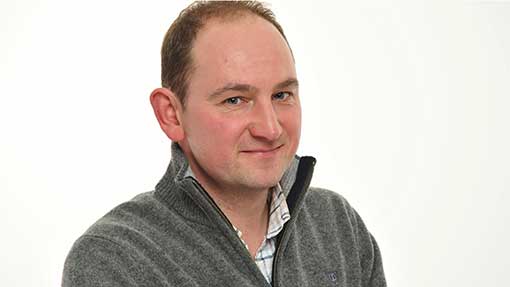OPINION: Measure farmers by their output, not their area

On the right-hand side of this column is a little box containing my least notable vital statistics.
Up until last year it had my age in there as well. This is now being hushed up amid fears that I am adding disproportionately to the problem of the ageing farming population.
Of the other data in there, the most irrelevant figure of all is the acreage of our farm. Fortunately this has been coded in hectares so it won’t mean anything to most of you.
Our little farm generates as much employment and net tax revenue as an average 2,500-acre arable farm
Once upon a time the boring question of “How many acres do you have?” was only ever raised by insecure people in the bar at Cirencester (I believe that under ancient rules you are permitted to wear different-coloured corduroy trousers depending upon the area). Recently, however, I’ve found even non-farmers have started taking an interest in the size of our farm – a sure sign of a farmland price bubble.
As it happens, our family occupy almost exactly the average-sized area for a farm in the UK, but I normally try to keep that quiet. If you tell a city dweller that you farm 400 acres, they think that you are a descendent of William the Conqueror. Give the same statistic to a modern arable farmer and they puff out their chest, call you “smallholder” and expect you to hold their coat for them.
I don’t know what social circles you move in, but if you met a chiropodist at a drinks party (and assuming that you are untroubled by a verruca) I doubt that your first question would be to ask the square footage of their surgery. What if you met an artisan baker? The chances are that you will at some point; half the population now seem to be making their living in this way. Would you insult that gentle, middle-class idealist by asking how big his oven was? I do hope not.
We should measure a farm by its outputs and not its area. These are the important questions. How many calories does it produce? How many staff does it employ? How much carbon does it sequestrate? How does it contribute to the social and economic fabric of the countryside? OK, that last question might be a bit difficult to pronounce at a drinks party after three glasses of Chablis but you take my point.
Our little farm generates as much employment and net tax revenue as an average 2,500-acre arable farm for a fraction of the public subsidy. The idea that you can only develop a farming business by occupying more land is an absurd hangover from the low commodity prices of the noughties. Why do farmers stretch themselves to buy more land when they could increase productivity by investing the same money in drainage, irrigation or introducing organic matter on their existing farm?
We know the answer to that question. It is because subsidies are paid by the acre rather than by the tonne and farmland is exempt from inheritance tax. This is sending land values and rents into the stratosphere and restricting opportunities for new participants. This suggests to me that the correct response for farmers is to manage what land we have with productivity and profitability in mind.
Maybe I’m just suffering from a case of Small Man Syndrome, but it concerns me that European policy and funding and UK taxation laws are ultimately driving the ownership of our farmland into fewer and fewer hands.
Matthew Naylor farms 162ha (400 acres) of Lincolnshire silt in partnership with his father, Nev. Cropping includes potatoes, vegetables, cut flowers and flowering bulbs. Matthew is a Nuffield scholar.
What do you think about this topic? Have your say on our website forums.

